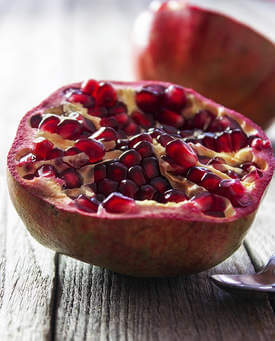 Temperature, atmosphere and humidity are important factors affecting pomegranate quality. Depending on storage period providing proper maintenance condition is vital to avoid chilling injury, husk scald and other harms. Here are some tips guiding how to store pomegranate:
Temperature, atmosphere and humidity are important factors affecting pomegranate quality. Depending on storage period providing proper maintenance condition is vital to avoid chilling injury, husk scald and other harms. Here are some tips guiding how to store pomegranate:
– Pomegranate does not ripen after harvest, so it must be fully ripe when picked.
– To inspect the fruit quality pay attention to it’s skin color, aril color uniformity and taste. Pomegranate flavor depend on it’s sugar/acid ratio. The proportion varies for different cultivars. But the soluble solid content should be above 17% for optimum level of sweetness. For proper astringency, phenolic content should be below 0.25%.
– Pomegranate can be stored in a cool and dry area for one month.
– You can keep pomegranate fruit refrigerated for 2 months.
– Frozen pomegranate remains for up to 6 months.
– Pomegranate juice should be kept in refrigerator and consumed in 2-3 days.
– The best maintenance temperature is 32º to 41º F (0º-5º C). Pomegranate will remain for 7 months in this temperature and relative humidity of 80-85%.
– You can keep pomegranate fruit for 2 months at 41º F (5º C) and 95% relative humidity.
– Since there is a risk of chilling injury in longer periods, 50º F (10º C) is the proper temperature for these occasions.
– Keep pomegranate in plastic liners, airtight bags or waxing cans and save it for one year.
– The fruit is susceptible to weight loss and looses 15-17% of it’s weight after 45-50 days storage. Modified atmosphere bags prevent this event. They contain 4-6% oxygen, 13-16% carbon dioxide and suitable amount of ethanol, acetaldehyde and ethylene.
– Chilling injury is kind of pomegranate disease in which the peel and the white tissue turn brown, symptoms of decay is observed and arils get pale. For preserving the fruit from this kind of loss, do not keep them more than one month in the temperature range of their freezing point -3°C and 5°C or longer than two months at 5°C.
– If pomegranate is held more than three months at 7°C or lower temperature, the husk color turns into brown, but no change in arils or white tissue occurs. The damage is called husk scald.
– The following table represents the respiration rate of pomegranate in several temperatures:
Temperature 5°C (41°F) 10°C (50°F) 20°C (68°F)
ml CO2/kg•hr 2-4 4-8 8-18
Exposure to 1 ppm of ethylene motivates respiration with no effect on quality features.
